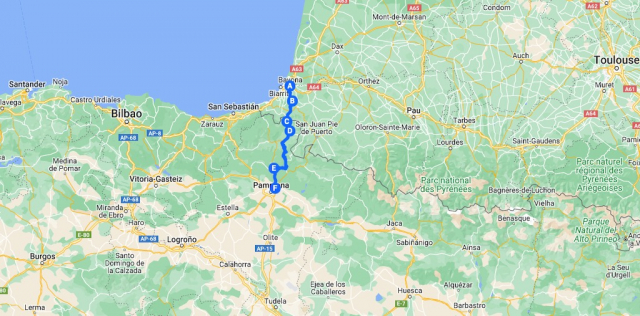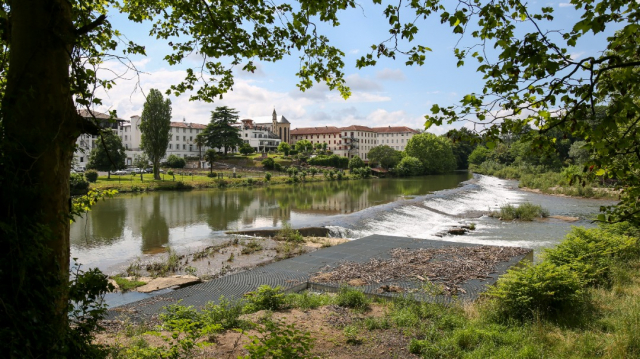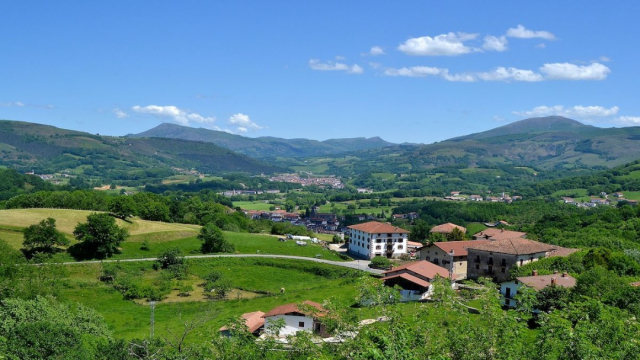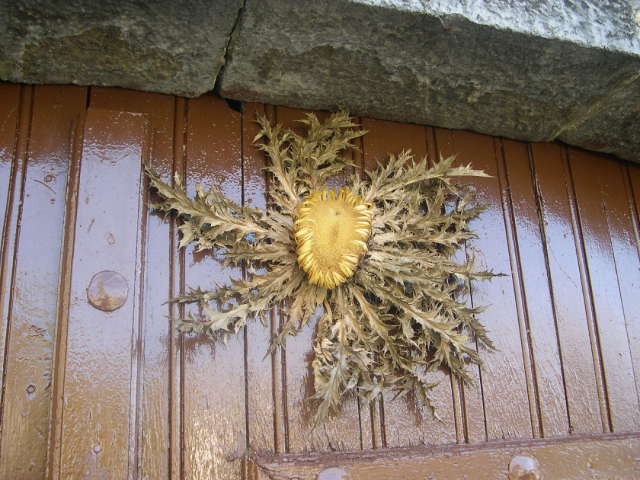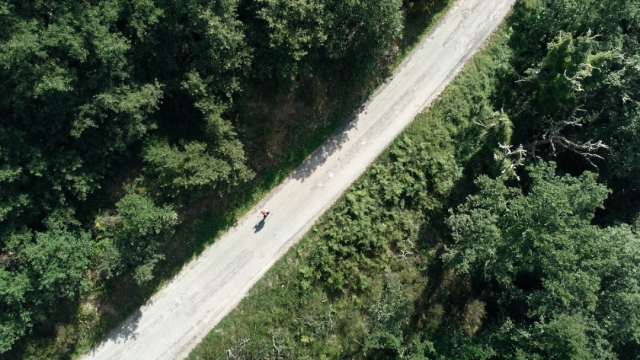Camino Baztanés: Stages and Map of the Jacobean route
The Camino Baztanés offers a direct connection between Spain and France, with beautiful natural surroundings and incredible stories from ancient times.
What is the Camino Baztanés?
The Camino de Santiago is made up of a wide variety of routes, which are divided into main and secondary ones. While the former end their route at the Cathedral of Santiago, the latter serve as a link between different towns. This group includes the Camino Baztanés, which serves as a connection between Bayonne (France), its starting point, and Pamplona.
It was a route created in the Middle Ages and was very popular with kings, armies and pilgrims as they tried to cross the border between countries. It crosses the Pyrenees, although its route is not really complex, but in ancient times it was one of the favourites because it allows you to cross the area at a lower altitude than other routes that go through the aforementioned place.
Over the years, this route has gained great popularity, seeing an increase in the number of pilgrims who dare to make this journey. It is not only the altitude of the route that makes it easier for more and more pilgrims to walk it, but the extraordinary landscapes and the welcoming hostels of the place manage to provide a unique approach that attracts more and more people every day.
Another of the highlights of this route is its rich history, where we find mythological characters and all kinds of legends that have been passed down from father to son and shared among pilgrims. It is also very important for its folkloric heritage, which is still very present in the area, together with a very careful culture that will allow us to know secrets from the past.
Why choose the Camino Baztanés to do the Camino de Santiago?
The Camino Baztanés is also known as the Urdax-Baztan Way. Its good signposting, stories and the altitude of its path have increased its popularity, even though it does not reach the high figures of other paths such as the Northern Way. However, its route is attractive to walkers and people in good physical shape, who are recommended to take this route.
It is not very complex, nor does it have dangerous passages, but its difficulty lies in the stony and sometimes badly maintained paths. Furthermore, as it is a mountain route, although it is not excessively high, it does have certain unevennesses which can hinder the progress of pilgrims less accustomed to this type of route.
One of the reasons that may lead us to opt for this route is simply the beauty of the landscapes it presents. On the route, the Camino Baztanés is presented, the place that gives its name to this route. It is one of the most spectacular Pyrenean valleys, standing out both for its size and for the tradition and culture of the area. Moreover, its mild temperatures offer the opportunity to enjoy this route at any time of the year.
Among all the reasons that can cause a pilgrim to choose this route, is its affordable link to the French Way. Therefore, it is one of the most interesting options for pilgrims who want to start their journey from France and wish to marvel at the first great city on the Camino de Santiago, Pamplona.
Stages of the Camino Baztanés (Camino de Santiago)
The Camino Baztanés begins in Bayonne, where it starts at kilometre zero and ends in Pamplona. There, the pilgrims end their journey of the Camino Baztanés to start the French Way. All this, after a route that is divided into six fascinating stages that take us through the Baztan Valley and across the borders between France and Spain.
What is remarkable about this route is its good signposting, despite the fact that there are areas from Olagüe where many walkers expect an improvement. But, fortunately, in France it is well signposted with small stickers that indicate the direction of the walk, so that, without the need for excessive signposting, we can enjoy the route.
The total distance covered by this route is 110 kilometres, linking Bayonne and Pamplona. It is divided into six stages, recommended for walking.
- Stage 1: Baiona - Ustaritz (14,10 km)
- Stage 2: Ustaritz - Urdazubi/Urdax (21,7 km)
- Stage 3: Urdazubi/Urdax - Amaiur/Maya (9,57 km)
- Stage 4: Amaiur/Maya - Berroeta (18,3 km)
- Stage 5: Berroeta - Olagüe (19,5 km)
- Stage 6: Olagüe - Trinidad de Arre (19,7 km)
One of the best preserved historical places on this route is the Monastery of San Salvador de Urdax, where we finish the second stage. In the third stage we finally enter the Baztán valley, when we pass Otsondo. The fourth stage runs fully through the valley, and we cross its capital, Elizondo.
The fifth stage is the hardest, but also the most spectacular because of the landscapes. It crosses the port of Belate, with beautiful views and which runs along the remains of the Roman road. It also passes by the monastery of Santa María, which once served as an old hospital for pilgrims.
In the last stage the landscape changes completely, as we approach Pamplona with its flatter and more urbanized terrain. This stage initially leads to Trinidad de Arre, but it can be continued to Pamplona. We would add a total of 25 kilometers, that many pilgrims choose to do.
Mythology on the Camino de Baztán
The Baztán Valley has a rich mythology that has been preserved to this day. One of the most recognized figures of Baztan folklore is the Basajaun, the lord of the forest. It is a humanoid creature (some find it similar to the yeti) that alerts the shepherds to the presence of beasts and storms. It is a peaceful creature that seeks to maintain balance in its domain, the Baztán forest.
There are other figures, such as the evil Cyclops Tarttalo or Inguma, the spirit of bad dreams. But do not be alerted by the presence of superhuman creatures in the forest, because if you carry a thistle flower (eguzkilore, in Euskera) with you, it will act as a talisman and you will be able to walk protected.
Shelters and food on the Camino Baztanés
Another reason why it is a route that is worth walking is its network of accommodation. Although it is a route that passes through small villages, there are different options for spending the night in each of the places where the stages end. Thus, it is possible to find a hostel every 11.5 kilometres on average.
Although it is true that in the Spanish part of the route it is more difficult to find private hostels, there are other types of accommodation such as hotels, hostels and rural houses, as well as a municipal hostel at each stage finish. In France, on the other hand, you will also find a variety of accommodation to spend the night.
In any case, the best thing to do is to organise your trip in advance and make a few calls to the places where you plan to stay.
As far as food is concerned, you can find different places in the villages where you can recharge your batteries during the stages. But one thing we cannot overlook is that the majority of the routes passes through forests and mountains, so it is important to always carry a supply of food and drink with you.
What time of the year to do the Camino Baztanés?
Although it is never a bad time to become a pilgrim, each route has specific characteristics that make certain times of the year more suitable for carrying the backpack on your back, and that is the case with the Camino Baztanés.
Due to the altitude of the road and its route, which abounds in mountainous areas, it is easy to find snow in the winter months. This, together with the low temperatures, makes this season the least recommended for walking the Camino Baztanés. However, if you have experience in these types of excursions, you will be able to witness some dream landscapes.
On the other hand, in summer temperatures can rise more than it seems, and walking for several hours a day can become a hard task if we are very sensitive to heat.
Therefore, the best times of the year to do this walk are spring and autumn. In spring, the landscape is very green and flowery, and in autumn, brown and orange colours predominate, although you can still find green trees, so the landscape becomes an incredible mixture of colours.
In short, the Camino Baztanés is a different route that is worth walking. And if you are willing to be a pilgrim for more days, remember that you can always join the French Way and extend your adventure to Santiago de Compostela.
Routes
Blog
 ¿Vas a hacer el camino de Santiago? Cuida tus pies antes y después
¿Vas a hacer el camino de Santiago? Cuida tus pies antes y después
 5 razones por las que contratar un seguro de viajes
5 razones por las que contratar un seguro de viajes
 Formas de hacer un logotipo
Formas de hacer un logotipo
 La importancia del registro de llamadas durante tu viaje por el Camino de Santiago
La importancia del registro de llamadas durante tu viaje por el Camino de Santiago
Information
Points of interest
Cities & Towns | Hostels | Lodgings | Restaurants | Saddlery | Doctors | Points of interest | Bikes workshop
Contact us | Privacy policy | Cookies policy | | Terms of use | Authorship | Web Map | Consentimiento
© Copyright LA VOZ DE GALICIA S.A. Polígono de Sabón, Arteixo, A CORUÑA (ESPAÑA) Inscrita en el Registro Mercantil de A Coruña en el Tomo 2438 del Archivo, Sección General, a los folios 91 y siguientes, hoja C-2141. CIF: A-15000649
